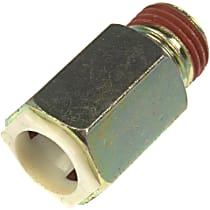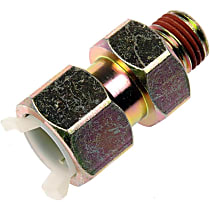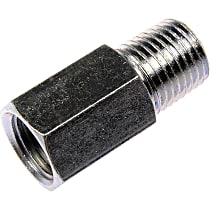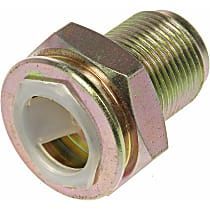{
"lazyNodes": false,
"abFitnotesFlag": false,
"abCrawlReviews": false,
"productOptionsCookie": false,
"orderDelayFlag": false,
"skipSessionCookie": false,
"covidMessage": false,
"fullTitleCookie": false,
"nrLoggerCookie": false,
"checkoutReviewCookie": false,
"productOptionSeqCookie": false,
"maintenanceFlag": false,
"bufferETACookie": false,
"multiShippingDiscountFlag": false,
"newFitmentFlag": false,
"surveyOptInFlag": false,
"crossSellFlag": false,
"skuMappingFlag": false,
"paySplitCookie": false,
"callDisableFlag": false,
"zipPaymentFlag": "u",
"hassleFreeReturn": false,
"lifetimeReplacement": false,
"cpn_off": false
}Ford Taurus Transmission Oil Lines
Shop Catalog
![]() WARNING: This product can expose you to chemical which is known to the State of California to cause cancer and birth defects or other reproductive harm. For more information go to www.P65Warnings.ca.gov.
WARNING: This product can expose you to chemical which is known to the State of California to cause cancer and birth defects or other reproductive harm. For more information go to www.P65Warnings.ca.gov.
![]() WARNING: This product can expose you to chemicals including Phthalates, which is known to the State of California to cause cancer and birth defects or other reproductive harm. For more information go to www.P65Warnings.ca.gov.
WARNING: This product can expose you to chemicals including Phthalates, which is known to the State of California to cause cancer and birth defects or other reproductive harm. For more information go to www.P65Warnings.ca.gov.
![]() WARNING: This product can expose you to chemicals including Phthalates, which is known to the State of California to cause cancer and birth defects or other reproductive harm. For more information go to www.P65Warnings.ca.gov.
WARNING: This product can expose you to chemicals including Phthalates, which is known to the State of California to cause cancer and birth defects or other reproductive harm. For more information go to www.P65Warnings.ca.gov.
![]() WARNING: This product can expose you to chemicals including Phthalates, which is known to the State of California to cause cancer and birth defects or other reproductive harm. For more information go to www.P65Warnings.ca.gov.
WARNING: This product can expose you to chemicals including Phthalates, which is known to the State of California to cause cancer and birth defects or other reproductive harm. For more information go to www.P65Warnings.ca.gov.
Product Questions & Answers
Customer Guides
Common Problems of a Ford Taurus Transmission Oil Line
Your Ford Taurus transmission oil line is one of the most important components of your vehicle's transmission system. With that said, it'll definitely make its presence felt it if something goes wrong with it. Below are some of the common problems that are associated with a bad Ford Taurus transmission oil line:
Shifting Issues
Encountering difficulties in shifting? Is it slipping? Or are you not able to shift at all? Whatever the case may be, there's a good chance that your Ford Taurus transmission oil line is to blame. You'll obviously have problems with shifting since the transmission oil won't be able to reach its destination in a timely manner (if at all) if your oil line is loose or damaged. Needless to say, this can give you quite a headache. Put an end to your shifting woes by properly reconnecting your transmission oil line (if it's loose) or by replacing it altogether (if it's damaged).
Leaks
A puddle of fluid under your Ford Taurus is almost always never a good thing. It's because it's most probably a leak of some sort. And one of the possibilities is that it's transmission oil. You can confirm if it's indeed a transmission oil leak by checking your transmission oil gauge. If your transmission oil levels suddenly dipped based on the gauge, then there shouldn't be any doubt on what's the fluid that's under your Ford Taurus.
Your Ford Taurus transmission oil line may be the source of the leaks. It may be loose, cracked, or worn out, hence the appearance of the puddle under your Ford Taurus. Again, the solution to this is to reattach or replace your problematic transmission oil line. But if you want to prevent leaking as much as possible, it's advised that you replace your transmission oil line every 24,000 miles. Don't wait for it to become cracked or worn out.
Noise
This is an issue that's associated with transmission oil leaks. You'll hear unusual-and often irritating-grinding noises if your Ford Taurus transmission oil line is leaking. This is usually heard when shifting. It's best to keep an ear out for these if you suspect leaking and want to confirm it.
To prevent transmission system problems, you'll want to put effort into the maintenance of your Ford Taurus transmission oil line. Yes, taking care of it can get quite tedious at times. But don't worry; you won't have to do it on a weekly or even monthly basis, anyway.
Periodically change your transmission oil.
Most experts recommend that you change your transmission oil every three years (or around every 30,000 miles). By doing so, you'll be able to make sure that your transmission system can perform optimally at all times. Another reason why it's advised is to protect your transmission system components from wear and tear. The said components include your Ford Taurus transmission oil line, of course. You see, old transmission oil can take a toll on your oil line. The debris and the other impurities that have been mixed with your transmission oil over the years can cause damage to it. So yeah, do change your supply of transmission oil periodically.
Begin the process by raising your Ford Taurus and securing it with jack stands. Once your vehicle is in position, locate your Ford Taurus transmission oil line. Place a bucket under the transmission oil line then loosen the clamps that hold it in place. After that, take out the transmission dipstick and place a long funnel into the tube. Draining your old transmission oil supply from the system is up next, so be ready. When you're all set (again, make sure the bucket is in place), remove the cap of the transmission oil case and start your vehicle. Your old fluid supply should start filling the bucket now. Don't just stand around waiting for it to fill up, though, as you'll have to replenish your supply of transmission oil while that happens. Make sure to pour the appropriate amount. Turn off your Ford Taurus right away once you're finished doing that. Now, reattach your Ford Taurus transmission oil line (although this is also the perfect time to replace it) and lower your vehicle. Hopefully, you did the process correctly (by pouring the right amount of transmission oil) and won't have to do any adjustments.
Regularly check for signs of damage and wearing out.
By regularly inspecting your Ford Taurus transmission oil line for signs of damage and wearing out, you wouldn't have to worry about transmission oil leaks. It's because you'll be able to know when to replace your transmission oil line. You'll be able to accomplish that in a timely manner, even before cracks that can lead to leaks even develop on it.







